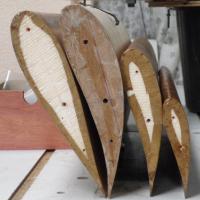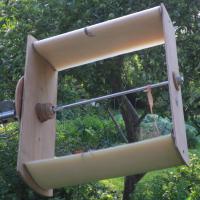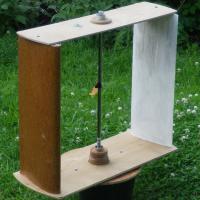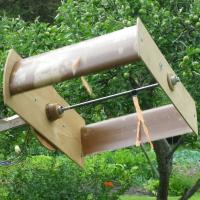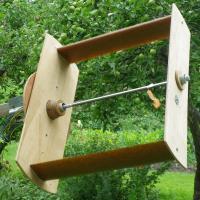
Experimental vertical axis wind turbines (VAWT)Test bed vertical axis wind turbine (VAWT)
I made this wind turbine as a test bed so I could easily trial different blade widths and sections.
The blades are cut from extruded polystyrene foam using a home made hot wire cutter with a battery charger as power.
I started with fairly large airfoil sections as they were easiest to cut and worked down in size.
The foam cores are covered in either thin fibreglass cloth and water based varnish or brown paper glued on with thinned PVA glue and sealed with varnish.
The plywood top and bottom arms of the rotor run on an extended central axle which support the blades at both ends.
The blades are fastened with chipboard screws into the foam core so they can be easily changed.
I went for a two blade design, rather than three, as it was quicker and easier to make the wider blades and they seem
more effective. A three blade design might start easier and run more smoothly.
The success of a particular set of blades reflect the how well the blades are matched to the characteristics of the alternator providing the load.
| ||||||||||||||||||||||||||||||||||||||||||||||||||||||||||||||||||||||||||||
I do not warrant the correctness of this content. The risk from using it lies entirely with the user. While using this site, you agree to have read and accepted the terms of use.
Copyright © 2026. All Rights Reserved. Privacy policy
